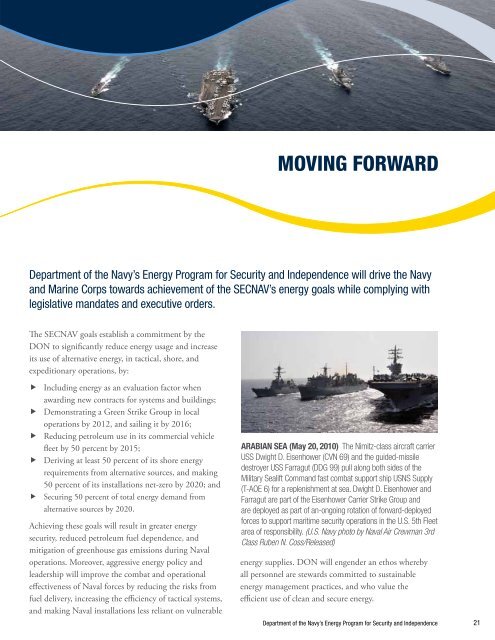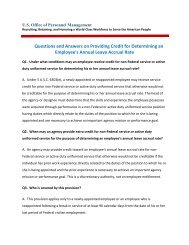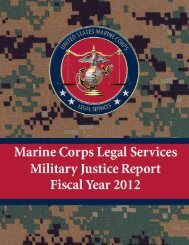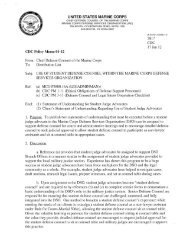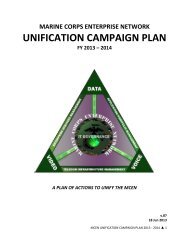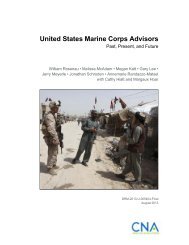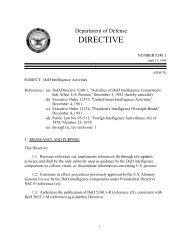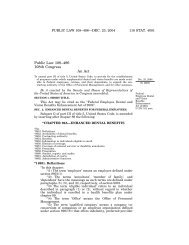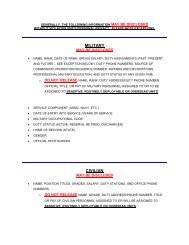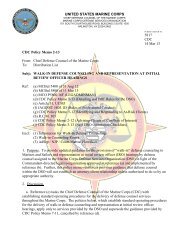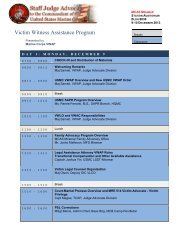Naval Energy Strategic Roadmap - US Department of the Navy ...
Naval Energy Strategic Roadmap - US Department of the Navy ...
Naval Energy Strategic Roadmap - US Department of the Navy ...
You also want an ePaper? Increase the reach of your titles
YUMPU automatically turns print PDFs into web optimized ePapers that Google loves.
Moving forward<br />
<strong>Department</strong> <strong>of</strong> <strong>the</strong> <strong>Navy</strong>’s <strong>Energy</strong> Program for Security and Independence will drive <strong>the</strong> <strong>Navy</strong><br />
and Marine Corps towards achievement <strong>of</strong> <strong>the</strong> SECNAV’s energy goals while complying with<br />
legislative mandates and executive orders.<br />
The SECNAV goals establish a commitment by <strong>the</strong><br />
DON to significantly reduce energy usage and increase<br />
its use <strong>of</strong> alternative energy, in tactical, shore, and<br />
expeditionary operations, by:<br />
ff<br />
Including energy as an evaluation factor when<br />
awarding new contracts for systems and buildings;<br />
ff<br />
Demonstrating a Green Strike Group in local<br />
operations by 2012, and sailing it by 2016;<br />
ff<br />
Reducing petroleum use in its commercial vehicle<br />
fleet by 50 percent by 2015;<br />
ff<br />
Deriving at least 50 percent <strong>of</strong> its shore energy<br />
requirements from alternative sources, and making<br />
50 percent <strong>of</strong> its installations net-zero by 2020; and<br />
ff<br />
Securing 50 percent <strong>of</strong> total energy demand from<br />
alternative sources by 2020.<br />
Achieving <strong>the</strong>se goals will result in greater energy<br />
security, reduced petroleum fuel dependence, and<br />
mitigation <strong>of</strong> greenhouse gas emissions during <strong>Naval</strong><br />
operations. Moreover, aggressive energy policy and<br />
leadership will improve <strong>the</strong> combat and operational<br />
effectiveness <strong>of</strong> <strong>Naval</strong> forces by reducing <strong>the</strong> risks from<br />
fuel delivery, increasing <strong>the</strong> efficiency <strong>of</strong> tactical systems,<br />
and making <strong>Naval</strong> installations less reliant on vulnerable<br />
ARABIAN SEA (May 20, 2010) The Nimitz-class aircraft carrier<br />
<strong>US</strong>S Dwight D. Eisenhower (CVN 69) and <strong>the</strong> guided-missile<br />
destroyer <strong>US</strong>S Farragut (DDG 99) pull along both sides <strong>of</strong> <strong>the</strong><br />
Military Sealift Command fast combat support ship <strong>US</strong>NS Supply<br />
(T-AOE 6) for a replenishment at sea. Dwight D. Eisenhower and<br />
Farragut are part <strong>of</strong> <strong>the</strong> Eisenhower Carrier Strike Group and<br />
are deployed as part <strong>of</strong> an-ongoing rotation <strong>of</strong> forward-deployed<br />
forces to support maritime security operations in <strong>the</strong> U.S. 5th Fleet<br />
area <strong>of</strong> responsibility. (U.S. <strong>Navy</strong> photo by <strong>Naval</strong> Air Crewman 3rd<br />
Class Ruben N. Coss/Released)<br />
energy supplies. DON will engender an ethos whereby<br />
all personnel are stewards committed to sustainable<br />
energy management practices, and who value <strong>the</strong><br />
efficient use <strong>of</strong> clean and secure energy.<br />
<strong>Department</strong> <strong>of</strong> <strong>the</strong> <strong>Navy</strong>’s <strong>Energy</strong> Program for Security and Independence<br />
21


